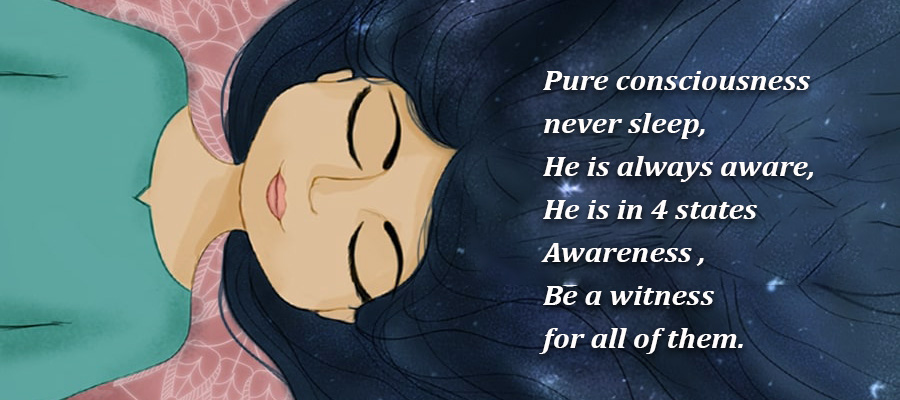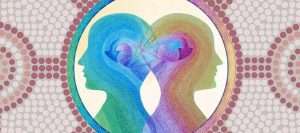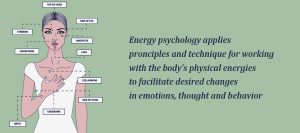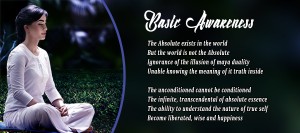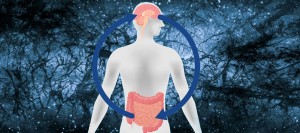- 1Mind and Prana
- 1.1Healing
- 1.2Sleep and the Home
- 2The Great Cosmic Dream
- 3Every Day as the Creation of the Entire Universe
- 4THE POWER OF CONSCIOUSNESS
- 5Three Worlds and Five Bodies
- 6SLEEP AS A SPIRITUAL DISCIPLINE
- 7Ayurvedic View of Dreams
- 8SLEEP PROBLEMS
- 8.1Why do we sleep?
- 8.2How does sleep affect memory?
- 8.3What has changed in sleep research?
- 8.4What do you measure to test brain health?
- 9NIDRA YOGA — MINDFUL SLEEP
- 10YOGA AT EACH LEVEL OF CONSCIOUSNESS
- 10.1Yoga in the Waking State
- 10.2Yoga in Deep Sleep
- 10.3Yoga in the Fourth State
- 11Natural Patterns of Sleep
- 12Dreams and the Astral World
- 13Science and the Mind
Three Worlds and Five Bodies
In Vedic-Agamic cosmology, there are three worlds of existence. The Bhuloka is the earth plane, which we experience through the physical body. The Antarloka (astral plane) is experienced through the subtle astral body; this corresponds with the mental, emotional and pranic koshas (bodies/sheaths) which surround the soul body.
The Antarloka is known to have higher and lower realms, thus allowing for a wide range of experiences—everything from confusing, subconscious, nonsensical dream scenarios and encounters with disembodied souls lost in “hellish” states, in the lower realms, to life-transforming visions of ancestors, Gods and gurus in the higher.
The Third World (Brahmaloka or Karanaloka) is the causal plane of light and blessedness. There are countless stories of artistic and scientific breakthroughs stemming from higher dream states in the Third World.
Subramuniyaswami’s mystical insights mirror revelations in the Mandukya Upanishad while adding unparalleled esoteric detail. He reflects,
“Why do we sleep? The mental body, which we dream in, is within the astral body and functions through the astral brain of that body. Through certain hours of the day during the waking state, the astral body uses the physical body, and the mental body works through the astral-body brain and the brain of the physical body. There is also another body to be considered, and that is the soul body [anandamaya kosha]. This body is what we touch into at least once through the sleeping state, and that gives not only a release of the karmas, often karmas that have been concluded, but also a new flush of energy into the astral, mental and physical bodies. So, we touch into the Divine through sleep.”
SLEEP AS A SPIRITUAL DISCIPLINE
Most of us have a robust dream life. Sometimes we experience high degrees of lucidity while dreaming; but for most dreams, we hardly remember them at all. Subramuniyaswami provides insight as to why this might be:
“We do not usually remember our astral experiences, because the astral brain and the physical brain are of two different rates of vibration. Therefore, when we return to the physical body after being in the astral body during sleep, any knowledge that we have gained on the astral plane begins to seep through into the physical plane during a period of four days afterwards. This knowledge accumulates, and we call it an inner knowing. Ideas seem to come to us from within, but actually we did learn and discuss them previously on the astral plane.”
Subramuniyaswami, who was trained by several gifted occultists before his samadhi and initiation by his satguru, approached dream life as a spiritual discipline, just as he approached waking life. He said the will that we use in our daily activities is the same will that we bring into our dream lives. For example, the willpower one might use to do five extra push-ups is the same willpower used to fly or jump in a lucid dream or go deep into the realms of inner consciousness.
It is the same will, energy, and consciousness that governs the astral/dream body, just as it animates the physical body in the waking state.
Sleep is a cleaner for the subconscious mind, it is also a time to gain higher knowledge which will later be filtered into the conscious mind as intuition.
For this reason, aim for the deepest levels of the astral world and prepare for sleep systematically. Pranayama, hatha yoga, and japa before going to bed can help depolarize prana from the conscious mind. This view is corroborated in the journal Nature Communications, where researcher Liu, Y., et al., reports that after sleep
“consolidated aversive memories retain their emotional reactivity and become more resistant to suppression.”
While sleep is a biological necessity for all human beings, Hindu sages throughout time have approached it also as a means of enlightenment, known as yoga nidra. Vasant Lad, renowned for his expertise in ayurveda, describes yoga nidra as the Vedic science of psychic sleep:
“Because deep sleep is a way to get close to the inner source, when you sleep with awareness and maintain that awareness. in a deep sleep state, you will be enlightened; such sleep becomes a form of samadhi. Sleep is not samadhi, but samadhi is like sleep when it occurs with total awareness. In that awareness, there is no judgment, no criticism, no likes or dislikes. In this awareness, there is complete cessation of ego, because to some extent we forget our ego or identity in deep sleep. Hence, the ayurvedic approach to sleep is one of the gateways to becoming enlightened. In deep sleep, even kings and beggars are the same. When they wake up, they become kings and beggars again. This is due to identification.”
Ayurvedic View of Dreams
The ayurvedic lexicon deals with the three fundamental qualities of prakriti, primal nature, called the gunas : sattva is purity, peacefulness, illumination; rajas is passion, activity; and tamas is darkness, inertia.
These three qualities govern awareness as it goes through waking, dreaming and deep sleep states. Lad clarifies,
“Jagrat, the wakeful state, functions with more of a sattva quality, which is clarity and purity. Sattva creates individual consciousness and the concept of an observer. The moment we become conscious of consciousness, it creates a center—this is the observer. This observer projects outside of itself because of the rajasic quality. The movement of observation is rajas, and it relates to the dream state. When awareness flows from one point to another, it becomes attention, and that flow of attention is perception. Perception is the process of rajas carrying awareness through the doors of perception (the senses) to meet with the objective world, which is tamas. The visible world is an expression of tamas, which is inertia, matter. Tamas relates to the state of deep sleep.”
Evolutes from the gunas are the five elements, which are governed by the three doshas in the human body: vata rules space and air, pitta rules fire and water, and kapha rules water and earth. In ayurveda, prakriti describes one’s basic constitution (a combination of three doshas); whereas vikriti describes the current state of disease or imbalance of those doshas. Dr. Lad shares,
“The nature of sleep varies according to a person’s prakriti and vikriti doshas. For a vata person, sleep is light and interrupted. Pitta people find it difficult to go to sleep, but once they fall sleep, they have relatively sound sleep. They are intermediate sleepers. Kapha people have deep, prolonged sleep.”
Ayurveda classifies dreams according to the doshas and also recognizes their influence upon the different dream states.
“In these dreaming states, systemic vata dosha may activate prana vayu “breath/vitality wind), systemic pitta dosha may stimulate prana vayu, or systemic kapha dosha may disturb prana vayu, leading to three different categories of dreams.”

